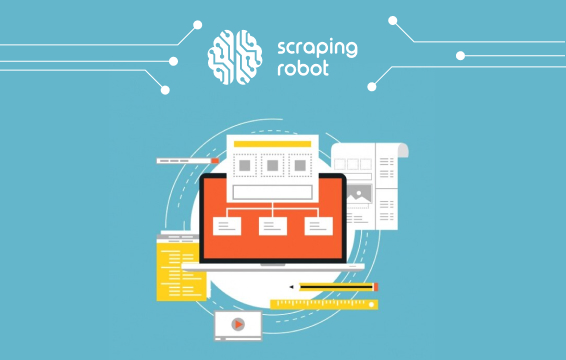How To Automatically Pull Data From A Website With Web Scraping

Table of Contents
1. What is Automated Data Collection?
2. How to Automatically Pull Data from a Website
For businesses small and large, taking advantage of online data for analysis saves money, time, and yields valuable insights for your organization. Because data extraction takes lots of time, learning how to automatically pull data from a website is a necessary 21st century business skill. Web scraping, the automatic extraction of data from a web page, is an easy-to-learn method and can therefore be used by people in different industries and at different data analysis skill levels.
Once you learn to use a web scraping tool, you’ll generate lots of product insights, find the perfect price point for your product, and stay aware of the shifts within your industry. In regards to marketing, web scraping makes it easier to extract consumer sentiment data from social media which will help you increase your brand awareness. Once you add web scraping to your skill set, your organization will reap the rewards.
What is Automated Data Collection?
 Automated data collection is the process of automatically extracting data through using software. Business automation is a smart goal for any business looking to gain insights, innovate its operations, and create more opportunities to grow. From big data collection operations to processes as seemingly simple as operating multiple social media accounts, the right tools are crucial to understand and know how they can benefit you. The more data you have at your disposal for analytics, the better shape you’ll be in to make informed decisions. Consider all the approaches to smart business that data can illuminate:
Automated data collection is the process of automatically extracting data through using software. Business automation is a smart goal for any business looking to gain insights, innovate its operations, and create more opportunities to grow. From big data collection operations to processes as seemingly simple as operating multiple social media accounts, the right tools are crucial to understand and know how they can benefit you. The more data you have at your disposal for analytics, the better shape you’ll be in to make informed decisions. Consider all the approaches to smart business that data can illuminate:
- price monitoring, price intelligence, and dynamic pricing
- reviews, brand reputation management
- sentiment analysis
- lead generation
- research
- intellectual-property monitoring
The smartest place to start thinking about automation is to know what ends that automation is capable of.
How to Automatically Pull Data from a Website
 Online data can be extracted manually, yet this takes lots of time and money. Using a web scraping tool makes the process faster, cheaper, and more secure.
Online data can be extracted manually, yet this takes lots of time and money. Using a web scraping tool makes the process faster, cheaper, and more secure.
Web scraping
Web scraping, the automatic extraction of data from a web page, is the best way to automate data collection because it is a simple process that can be learned by workers at any level of data analysis knowledge. To use a web scraper, you input the URL of a specific webpage (product page, online ranking, etc) and you receive the entire web page as data for the output. An HTML scraper is built to work with any HTML link, but is unable to organize the data as well. Scraping Robot’s scraping modules are built to work with specific websites and therefore are better at recognizing and organizing the data pulled from that specific site. Check out our pricing page for more details.
Benefits of Automated Data Collection
 Once you learn how to use a scraping tool or other collection technologies, you’ll begin to experience many benefits regarding product insights, pricing, and industry trends.
Once you learn how to use a scraping tool or other collection technologies, you’ll begin to experience many benefits regarding product insights, pricing, and industry trends.
Product insights
Whether you’re analyzing your competitor, scraping product pages yields many valuable insights. You’ll receive data such as price, product details (size, material, etc), and description. This information is useful when trying to improve a product or compare it to similar models. If you’re looking to reduce the cost of production, consider how materials or size can be reworked to possibly lower the price. When trying to expand a line of products, analyzing the current ones can help you brainstorm ideas for companion products whether they have the same aesthetic or improve the consumer’s experience.
Find the perfect price
Lots of consumers consider price before anything else, which makes finding the ideal price point for your product a unique challenge. It needs to be within the range of your competitors but not too exclusive. Scraping the prices of similar products and your own helps you to establish this range. Once the price range is established, then you can take into account product details (cost of materials, size), and more. Scraping reviews of differently priced products is a useful way to gather insights of how consumers expect products above a certain price to function. Even being ten dollars more expensive than the competitor raises consumer expectations.
Consumer sentiment data
Understanding how consumers feel is essential to creating a better product and brand. In our age of online reviews, there is a seemingly endless amount of consumer sentiment data that can be extracted in the form of reviews, online comments, social media mentions, and more. Traditionally, organizations used expensive focus groups to conduct consumer research. Now, you can hear from customers themselves in the form of online reviews.
While it is possible to read online reviews and manually extract insights, analyzing reviews as data side-by-side makes spotting patterns easier. For example, if multiple reviews mention that the product material is not durable, then the problem is fairly clear. Beyond the product, online reviewers also comment on the shipping process and other aspects of engaging with your brand. Therefore, consumer sentiment data is richer than “thumbs up, thumbs down” and actually provides valuable insights from existing customers.
Track industry trends
While you need to become aware of your product and how it is perceived, you must also stay up to date on news within your industry as well. Scraping tools make business automation easier and therefore give you more time to analyze the data you’re collecting through automatic data collection. Once you’ve scraped relevant data for your business and your competitors, you can create an analysis of the industry trends at large using your combined insights.
It is crucial to do industry analysis because it contextualizes your organizational data. If your sales are down and so are all your competitors, then it is likely an industry-wide trend and therefore has less to do with your individual practices. It is important to distinguish which insights are unique to your business and which are simply a result of how the industry is trending at a larger scale.
Marketing Automation and Web Scraping
 In addition to providing valuable product insights, web scraping is a great marketing tool that can help you analyze social media and expand your brand awareness.
In addition to providing valuable product insights, web scraping is a great marketing tool that can help you analyze social media and expand your brand awareness.
Brand awareness
In addition to scraping followers’ profiles, social media sites are a great way to raise brand awareness with targeted marketing as well as understand how your brand is viewed by people. Today, brands stand for more than their products. Organizations with a younger target demographic especially need to consider topics like climate change, social equity, and other prescient topics with grace.
Since younger users regularly use social media apps, scraping trending topics is an easy way to analyze data relating to these issues. By understanding what your consumers value, it is easier to meet their standards.
Conclusion
 Data analysis is essential to a business’ growth. However, getting weighed down in paper documents is exhausting, messy, and time consuming. If you’re wondering how to automatically pull data from a website, then web scraping is your answer. Web scraping, the automatic extraction of data from a web page, is an essential tool for workers of all backgrounds and skill levels.
Data analysis is essential to a business’ growth. However, getting weighed down in paper documents is exhausting, messy, and time consuming. If you’re wondering how to automatically pull data from a website, then web scraping is your answer. Web scraping, the automatic extraction of data from a web page, is an essential tool for workers of all backgrounds and skill levels.
Web scraping helps your organization extract useful product insights, find the perfect price, understand consumer needs, and track industry trends. For organizations with a social media presence, scraping social media sites is a great marketing strategy that helps you connect with younger consumers and understand your brand’s reputation in the market. Scraping Robot’s scraping tools are built to help your organization easily and securely engage in automatic data collection.
The information contained within this article, including information posted by official staff, guest-submitted material, message board postings, or other third-party material is presented solely for the purposes of education and furtherance of the knowledge of the reader. All trademarks used in this publication are hereby acknowledged as the property of their respective owners.
